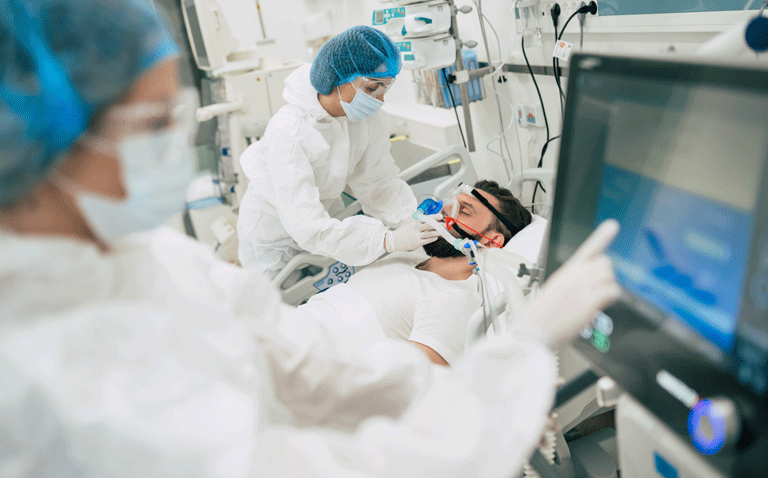The risk of adverse cardiovascular outcomes is significantly higher in patients hospitalised with COVID-19 compared to uninfected controls
There is an elevated risk of several adverse cardiovascular outcomes among patients hospitalised with COVID-19 but the risk of both venous thromboembolism and death is still significant in non-hospitalised cases compared to a group of uninfected, matched controls. These were the key findings from a prospective analysis of participants in the UK Biobank by UK researchers.
Studies have suggested that infection with COVID-19 is a risk factor for acute myocardial infarction and ischaemic stroke. Moreover, a retrospective study has revealed how cardiac arrhythmia is also a clinical sequelae following an acute infection with the virus. Nevertheless, whether these adverse cardiovascular events are restricted to patients with more severe disease, i.e., those who are hospitalised, or whether there is an increased risk among patients with less severe disease remains unclear. In the present study, UK researchers examined if exposure to COVID-19 was associated with incident cardiovascular disease and mortality. The used data from the UK Biobank and identified those infected with COVID-19, linking to Public Health England laboratory information to identify PCR test results. These individuals were then propensity matched to 2 control patients based on a number of factors including age, sex, body mass index, various co-morbidities (e.g., hypertension, diabetes), smoking status and ethnicity. The researchers considered several adverse cardiovascular outcomes including myocardial infarction (MI), venous thromboembolism (VTE), cardiovascular disease (CVD) mortality, stroke, heart failure, atrial fibrillation and pericarditis. In a further analysis, the team assessed if the risk of these adverse cardiovascular outcomes reduced over time.
Adverse cardiovascular outcomes and COVID-19
A total of 471,227 individuals with a median age of 69 years (44.7% male) were included in the analysis which included 17,871 COVID-19 patient cases. Individuals were followed-up for an average of 141 days. Among those with COVID-19, the majority (80%) were not hospitalised and in the hospitalised cohort (3567), 75.7% had primary diagnosis of COVID-19 whereas the remainder had COVID-19 recorded as a secondary diagnosis.
Among non-hospitalised COVID-19 patients (14,304), there was a more than two-fold higher risk of VTE compared to uninfected controls (Hazard ratio, HR = 2.74, 95% CI 1.38 – 5.45, p = 0.004). Additionally, there was a significantly increased risk of death (HR = 10.23, 95% 7.63 – 13.7, p < 0.0001). Interestingly, the risk of incident MI among the non-hospitalised COVID-19 group was significantly lower (HR = 0.19, 95% CI 0.06 – 0.65, p = 0.008).
In contrast to the non-hospitalised group, patients hospitalised with COVID-19 had significantly elevated risks of MI (HR = 9.9), heart failure (HR = 21.6), atrial fibrillation (HR = 14.9), VTE (HR = 27.6) and cardiovascular mortality (HR = 8.76). Furthermore, there were also increased adverse cardiovascular risks in patients for whom COVID-19 was the secondary diagnosis, e.g., MI (HR = 22.2), heart failure (HR = 13.1), atrial fibrillation (HR = 29.3) and cardiovascular mortality (HR = 14.6).
Next researchers examined the interaction with time and considered the risk of events 30 days before and after their acute infection. Although the risks for atrial fibrillation, VTE and heart failure were largely attenuated after 30 days, these risks still remained significant, e.g., for VTE (HR = 3.97) and heart failure (HR = 2.78).
The authors concluded that while infection with COVID-19 is associated with a higher risk of adverse cardiovascular outcomes, the risks are largely confined to hospitalised patients and highest within the first 30 days following infection.
Citation
Raisi-Estabragh Z et al. Cardiovascular disease and mortality sequelae of COVID-19 in the UK Biobank Heart 2022










